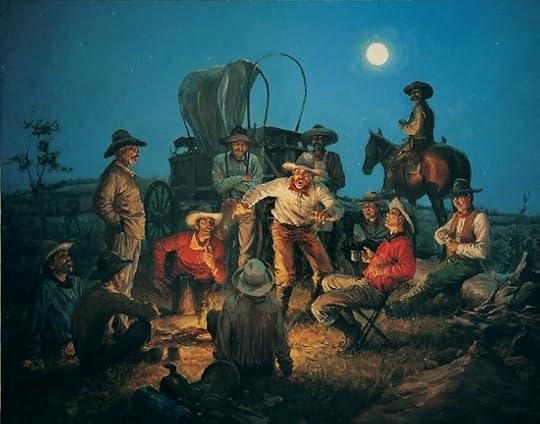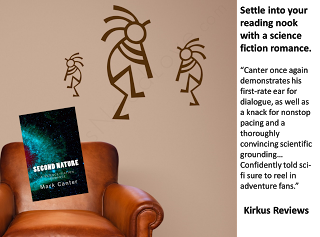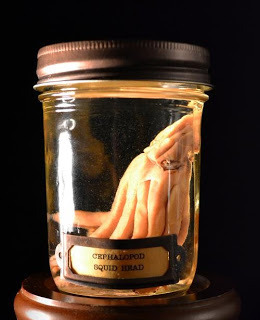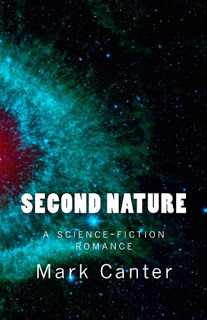Mark Canter's Blog: Selling Storytelling, page 3
November 11, 2013
Classic Story Structure

No untrained musician grabs a sax and makes it wail like “the Trane” (John Coltrane). Saxophonists, novelists—all artists—first need to learn the rudiments; only then can they riff.Among the rudiments of storytelling is classic story structure—and I do mean “classic.” Aristotle first explained these plot elements in The Poetics (4th century B.C.E.), the earliest known work of literary theory. All the world’s literary masterpieces, as well as contemporary romances and thrillers, mysteries and fantasies, can be broken down to the same building blocks that Aristotle pointed out millennia ago.Before you try experimenting with tricky story structures (stories that begin at the end and then reconstruct the beginning; stories where the narrator is deluded, or is a liar, or has no long-term memory, etc.) you would do well to learn the basic dramatic structure that has worked so well since ancient times.You may worry that if you build a story using a time-worn formula your romantic tale will turn out to be one big cliché. Yet given the many far-ranging variables in character, motivation, setting, events—and the author’s unique voice—it is rare for well-written tales to end up as clones (though fans of romance and other genre literature will expect to encounter familiar themes, such as the redemptive power of love).Here then, in minimalist form, is the classic story structure used by Aristophanes and Shakespeare and Nora Roberts.
· Something dramatic happens to someone, creating a serious problem or provoking a deep desire for something she wants very badly.
· The drama takes place within a specific, concrete setting (the setting should not be arbitrary, but an integral element of the story).
· She fights back or pursues her goal, driven by a strong need created by her character and her past. Forces or persons try to stop her, but she keeps pressing forward because something critical to her heart is at stake.
· Things get more complicated and she plunges ever deeper into difficulties and danger. These obstacles arise logically from her efforts to gain her goal.
· Her troubles escalate, everything grows worse.
· Troubles become monumental, and the protagonist is finally forced by the circumstances to discover a truth about herself or the world. This important lesson enables her to break through to make a critical decision or a personal change.
· At last, she gains her goal and satisfies her need.
Here is a slightly different look at this same classic story structure:
· A person (The Protagonist)· In a place (The Setting)· Has a problem. (The Conflict/Antagonist. Look for specific characters and troubles tailored to hurt and challenge this particular character. Remember that an internal conflict often carries a story farther than external troubles.)· The person takes her best shot at solving the problem. (The Action)· Things get worse.(The Complications,full of surprises, twists, setbacks)· Troubles hit rock bottom. (The Pit—which usually awakens The Insight and then The Choice.)· The protagonist confronts her opposition (internal and/or external) in a showdown. (The Climax).· The story resolves—and in a romance, it typically resolves joyfully. (The End, with perhaps a brief denouement or epilogue).
Learn well this ancient, archetypal structure, which virtually all successful stories follow. Then improvise your heart out.
Published on November 11, 2013 09:36
May 16, 2013
Silver Medal Winner, Independent Book Awards 2013
Published on May 16, 2013 14:22
March 20, 2013
Second Nature

Dolphins. The ancient Native American myth of Kokopelli. Francis Crick's theory of the origin of life on Earth. Sounds like a love story.
“The book’s large amount of exposition—on everything from nanotechnology to cetacean biology—is smoothly integrated into the fast-paced narrative.” --- Kirkus Reviews
When the heart sees more keenly than the eye, beauty is unexpectedly found.
Gen is a teen-age woman. She is also a bio-warfare research project, designed by Col. Jack Eberhard. Born at Redstone Military Laboratories inside a quarantine unit rated Biohazard Level Four, Gen’s body harbors billions of microscopic organisms that have mutated from her genetically altered cells. The tiny entities in Gen’s tissues control life at the molecular level and Eberhard weekly tests their ability to heal the simulated combat wounds he inflicts on her.
When a deadly threat forces Gen to escape the lab, she discovers that her marvelous power to reconstruct living tissue, from proteins to cells to whole organs, enables her to transform herself bodily into any animal whose DNA she collects through a simple touch.
While in the form of a dolphin, Gen saves dolphin researcher Cade Seaborne from drowning. Her heartfelt attraction to him compels her to spontaneously shape-shift back into human form; but the morphing is incomplete and Cade encounters Gen as a woman with her head and face hideously deformed.
As Gen struggles with her dilemma of falling in love with a kind-hearted man who nonetheless regards her as pitifully ugly, the evolving microscopic life-forms inside her compel her to complete a frightening journey to fulfill their mysterious mission. Meanwhile, Eberhard has tracked down Gen and he’s sending in Special Forces to carry out a priority-one Executive Order: capture and destroy his dangerous experiment. When Cade at last recognizes beauty behind the mask of a beast, he’ll give his life to protect the unusual woman he cherishes. And he learns that love has its own transformative power.
Michael Crichton meets Hans Christian Anderson in this romantic thriller with the brains of science fiction and the heart of a fairy tale.
Published on March 20, 2013 14:08
March 19, 2013
Men's Locker Room Clash
 I’m standing naked next to a 50-something dude in the men’s locker room, where two rules always apply: 1) Talk only about sports, 2) Don’t eye each other’s genitals.
I’m standing naked next to a 50-something dude in the men’s locker room, where two rules always apply: 1) Talk only about sports, 2) Don’t eye each other’s genitals. The guy has got an exotic language tattooed on his right shoulder and I read it aloud: “‘Om mani padme hum,’” I say, “In Tibetan.”
“That’s what it says,” he agrees, “but it’s not Tibetan. It’s Sanskrit.”
“The words are Sanskrit,” I say, “but that script on your shoulder is Tibetan.” I flash my left shoulder tattoo at him, to show him a true Sanskrit Om. “The Uchen script in your tattoo was developed in the 7th century, based on an Indic alphabet. That’s why it looks a bit like Sanskrit, but you can see it’s not the same.” I point to my right shoulder, upon which is tattooed the Sanskrit syllable Hrim. “Compare the letter ‘H.’” I point to the Sanskrit “H” on my shoulder and then to the Tibetan “H” in the word Hum on his shoulder. “See?” My pointer finger does not penetrate his zone of personal space, but it hovers dangerously close.
The guy glares at me. We were supposed to be chatting about football, and now I’ve unintentionally challenged his manhood. Besides, any man as hairy as I am should be incapable of articulating more than bearish grunts. Is it too late to ask, “How ‘bout them Seminoles?”
“My root guru is Avalokiteshvara,” he tells me, in an attempt at one-upmanship.
“The Buddha of Infinite Compassion,” I say, defeating his secret code almost before the words have left his lips. His eyes turn downward. My Kung-Fu is stronger than his. He retreats to the shower.
I think to shout after him, “The English word ‘clash’ is derived from the same Indo-European root as the Sanskrit word ‘klesha.’” But I keep that information to myself.
It’s a good thing we weren’t talking about football; I don’t know a damned thing about football.
Published on March 19, 2013 22:20
February 3, 2013
The Improbable Doctor Canter Museum

I've seen only one photo of my father as a young man, a black-and-white snapshot: he’s 15, thick black hair and bad acne, leaning against a big elm, cradling three or four thick books under his arm.I like the photo because it puts his bibliomania into perspective. At an age when other boys in Baltimore were getting into stickball, sandlot football and trouble, Nathan Canter was getting into Kierkegaard, Melville and The Origin of Species.In his late 20s, as a bookwormish Army surgeon, he met and married my mother, a ward clerk at the Perry Point, Maryland, veteran’s hospital. Twelve years and three sons later, they divorced. Without a wife and kids there was no longer a check on my father’s craving for books. He was free to marry his true mistress and devote himself as faithful husband to his ever-expanding library.Naturally, his collection only began with books. Soon my father accumulated anything that grabbed his peculiar intellect. The mass of books, antiques, art and curios rapidly metastasized to invade every cell and nook of his Rochester, New York home, until the old house was densely packed with objects beautiful and monstrous. It was not so much a museum as it was a museum warehouse, for there was scarcely enough space for a person to squeeze from one room to the next, and only the initiates, the inner circle, were invited into his live-in athenaeum and gallery, by way of the back door.Inside, one found sunless rooms with floor-to-ceiling bookcases jammed shoulder-to-shoulder, stuffed with antiquarian volumes, reeking with the dark breath of crackled leather. Plus thousands of books in cardboard boxes, stacked to form head-tall canyon walls through which human traffic was forced to scuttle sideways. Boxes stacked in the hallways and perched down the stairs to the cellar and up the stairs to the bedrooms; my father’s antique Pennsylvania Dutch bed always heaped with books—fifty or more—which he shoved aside to make space to sleep. Boxes piled high in the walk-in pantry, loaded atop and under and around the kitchen table, mounded in the bathroom. Solid walls of boxes sealing off unused rooms like ancient building blocks; so that to enter the lost spaces one had to mine a tunnel through the block walls, like an archaeologist excavating the Temple at Jerusalem.The sheer weight of my father’s archives overwhelmed the woodframe house. Both the upper and lower floors squeaked and sagged from their heavy cargoes, like decks of a clipper ship with overloaded holds, coming apart at her beams. Ceilings bulged; plaster shattered and fell like hail.In addition to books, so much other stuff added to the tonnage. A human skull was not out of place in the strange mix—browse around and you’d come across several—male and female—also human femurs, tibias, fibulas, a specimen box with the complete skeleton of a Seneca Indian child; a death mask made of wax poured over the face of an ax murderer’s victim for use as courtroom evidence in bygone days; a Union Army surgeon’s field bag with tools a carpenter would feel at home with: saws, drills, pliers, hammers, punches.A squid, a human brain and other vague, fleshy things floated in formaldehyde in glass jars—relics from an extinct 1920s scientific supply company. Yellowed posters from the world wars, one warning Londoners to watch out for Zeppelins, another advertising the luxuries of a trans-Atlantic crossing aboard the Lusitania; a handpainted bill announcing a minstrel in blackface “To perform on the Delta Queen,” one summer night in 1863.A huge bull moose head stared dumbly from the living room wall alongside a 12-point stag, mighty elk, bighorned ram, spotted lynx, a gruesome boar and a giant garfish. In the center of the room, dozens of Amazonian hummingbird species perched lifelessly from a tree inside a glass display case bigger than a refrigerator.Scale-model ships in lead from every navy of WWII. Metal signs, a vaudeville marquee. Apothecary jars with herbs and powders. More than four-hundred African masks. Tin toys, campaign buttons, ephemera. Surprises.So much stuff.Somehow, enmeshed among his books and things, my father managed to sleep, eat, read, bathe, read, go to work, read—that is: to live. One Chanukah, my brother Bram—whom our father named after Bram Stoker, the Irish author of Dracula—was visiting him. Bram told me they heard footsteps approaching, crunching on the crusty snow.“Oh, here comes Mrs. Steinglitz,” my father said. “She buys any book that has pictures of roses. Listen, if she mentions me not living here just go along with it.” “She thinks you don't live here?”“Well the first time she came into the house she looked around and said, ‘Dr. Canter, you don’t live here, do you?’ And I told her, ‘Nooooo. How could anyone live here?’”I hadn’t seen my father for six years when I arrived in June 1968—the Summer of Love—to spend my high school senior year sharing a few cubic feet of free space with him and the paper dust in his museum/warehouse, shifting boxes from one section of a cardboard canyon to another.I said, “Dad, you don't even know what you’ve got in your collection.” “Sure I do,” he said. “I'm just not sure where everything is to be found.” “Why don't you catalog the stuff?” I suggested. “Draw a locator map.”He frowned. “That's the Nazi mentality. That's the kind of task an S.S. officer would enjoy.”My teen-age friends thought the house was a blast. "Bitchin’!" they’d say when they saw the wax death mask, or "Far out man!" as they examined the 18th-Century Japanese pillow books of erotic woodblock prints. I personally remember that year for a particular moonlit night, the last time I was afraid of the dark; home alone, my father sewing up gunshot wounds in the ER at St. Mary’s; me alone with the oil paintings subtly alive in their ornate frames, and that damned wooden monkey with glass eyeballs I had to squeeze past to get to my wedge-shaped attic bedroom.I got mad at my fear. "Dammit, I'm 16," I said aloud to my father’s house. "You’re a deadly creepy place—but I'm not a baby anymore." The anger worked. I sprawled on my folding metal cot under the converging ceiling and walls with the bare tree limbs scritch-scritching at the panes in the gable, and I fell asleep. It would be another decade before Stephen King became a household name, and this helped.In my thirties I returned to Rochester for a Thanksgiving visit from my home in St. Petersburg, Florida. I found my father sitting in his reading chair beneath the glazed eyes of the bull moose, the old man wrapped in a heavy winter coat, wool with fake fur collar, balding head tucked in a wool cap pulled low over large ears. As we spoke the condensation from our breaths formed little Loony-Toon balloons in the dusty air."Dad, its cold in here.""I keep the thermostat at 48," he said."Why?" "I'm not gonna give the damn utility company more money that it deserves!""But I can't take this,” I said, “I'm a Southerner, remember?" He sighed. “All right. We’ll have to make our way back to the thermostat."The room with the thermostat was stacked within inches of its 10-foot ceiling with boxes of books. The excavation took a couple hours. We found a lot of interesting things—items he had forgotten about—I mean, besides the petrified Chihuahua turds. My father kept an old Chihuahua named Cocoa that had not been trained to relieve itself outdoors. I once took the clickety little she-dog outside and her bulging brown eyes rolled upward at the cloudless winter sky and Cocoa nearly had an existential breakdown—fear and trembling and gnashing of teeth—her limits smithereened.In his latter days, Nathan Canter, M.D.—that's what my brothers and I call him, because that's how he signed his four or five letters to us over the decades (one handwritten letter, plus two photocopies for his three sons)—"Your loving father, Nathan Canter, M.D."—my dad, was severely stricken with a disease named after another doctor, Parkinson. We moved him from Rochester into a Tallahassee nursing home. I built him a small bookcase and stuffed it with books from my den.For half a year Dr. Canter sat in diapers in a wheelchair, reading books with a philatelist’s magnifying glass, while his 93-year-old roommate mumbled over and over, “Hurry up, let’s go.” My father fed on his standard diet of literature; his roommate, a former Florida legislator, ate tepid porridge: The body of one had given out as had the mind of the other.My parting image of my father: He’s in his wheelchair, magnifying glass in one trembling hand, reading limericks. Two days later, at age 77, he was done reading—that is to say, dead.He wanted as his epitaph: Ars longa, vita brevis. Art is long, life is short. My brothers and I scattered his ashes like so many tiny pages—ex libris: Nathan Canter, M.D.Jonathan, Bram and I will never again visit the Rochester house and share its available oxygen with the musty essence of a set of Encyclopedia Britannica, first edition. The hodgepodge temple to my father’s eccentric psyche, built of tomes and treasures in unmarked cardboard boxes has been emptied—its contents sold at auction. The auction’s biggest item: a tin toy German oceanliner, with an alcohol-burning steam engine, fetched $49,000. My father had paid $20 for it. An art collector bought the wooden monkey with the glass eyes (a Revolutionary War-era advertising prop) for $8,000. Even the house itself was sold, after a structural engineer figured out how to brace up the sagging floors.Only after we’d dumped 60 cubic feet of trash, did we learn of the unframed Albrecht Durer oil-on-canvas: Missing. All you trash hounds, be on the lookout for it, somewhere at the Monroe County, N.Y., dump. I tease you not.I've brought back a few beautiful and bizarre curios to my home. As I sit writing this, a ceremonial mask from Ghana glares at me from my office wall: a monkey clenching a snake in its teeth, perched on the head of a bearded demon.Bitchin’, man. You oughta see it.
Published on February 03, 2013 23:22
October 23, 2012
Young Americans are readers
Eight in 10 Americans under the age of 30 have read a book in the past year, compared with 7 in 10 adults in general, according to a new Pew Research Center report.



Published on October 23, 2012 06:38
October 22, 2012
Book review from German reader
A reader reviewed my novel Down to Heaven on the Amazon DE website:5 out of 5 stars. Fancy fantasy…This book will fascinate readers who like to read a mix of adventure, fantasy and romance. An extraordinary idea with well-drawn characters.
Published on October 22, 2012 13:57
Customer review of Ember
Just discovered this British reader's review of Ember From the Sun on the Amazon UK website:
5.0 out of 5 stars: The best book I've read in a long time.I loved this book. Canter is an excellent author, and for a first offering, this is exceptional. Ember, his heroine, displays all the confused emotions you would expect her to - and more. She experiences what everyone does - confusion about her background and why she's here, insecurities about her own appearance and what people think of her. Except, Ember has more of a reason to think this, as she's so different. We can all see a piece of ourselves in her. This is because in a sense we all came from people like her. There is a lot of science mixed into it, but this just makes it more believable. Many tensions are stirred up and there is evidence of the kind of racism that occurs in everyday life. So, all in all, this book is the recipe for a perfect read, and I hope that any other books Canter may produce will be up to this standard.|

5.0 out of 5 stars: The best book I've read in a long time.I loved this book. Canter is an excellent author, and for a first offering, this is exceptional. Ember, his heroine, displays all the confused emotions you would expect her to - and more. She experiences what everyone does - confusion about her background and why she's here, insecurities about her own appearance and what people think of her. Except, Ember has more of a reason to think this, as she's so different. We can all see a piece of ourselves in her. This is because in a sense we all came from people like her. There is a lot of science mixed into it, but this just makes it more believable. Many tensions are stirred up and there is evidence of the kind of racism that occurs in everyday life. So, all in all, this book is the recipe for a perfect read, and I hope that any other books Canter may produce will be up to this standard.|
Published on October 22, 2012 11:24
October 11, 2012
The Silent Treatment
 A few decades ago, I spent a week at this Trappist monastery, where the monks practice strict silence. The essay about my experience appeared in Yoga Journal, Shambhala Sun, St. Petersburg Times, Bradenton Herald and Men's Health magazine.
A few decades ago, I spent a week at this Trappist monastery, where the monks practice strict silence. The essay about my experience appeared in Yoga Journal, Shambhala Sun, St. Petersburg Times, Bradenton Herald and Men's Health magazine.
Published on October 11, 2012 12:14
September 30, 2012
Synchronicity
My historical novel, The Bastard, about the missing decades in the life of Jesus, features a plot driven in large part by a central love story involving Mary Magdalene. As I was typing the final sentences to the last chapter, news broke about a papyrus fragment that supplies evidence that Jesus may have been married to Mary Magdalene. http://www.huffingtonpost.com/2012/09/18/the-gospel-of-jesus-wife_n_1891325.html?utm_hp_ref=mostpopular 
Published on September 30, 2012 12:32
Selling Storytelling
A smattering of notes and advice on the craft of writing stories that sell.
- Mark Canter's profile
- 16 followers




